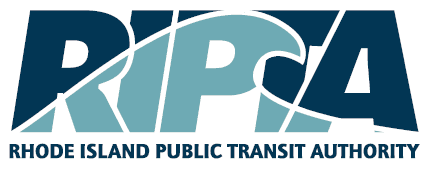
High-Capacity Transit Study


Frequently Asked Questions
This study is following a prescribed federal process called an “Alternatives Analysis” (AA) as described by the Federal Transit Administration, which includes consideration a wide range of public transportation or multimodal alternatives to address transportation problems within a corridor or subarea. The outcome of the AA will:
- Recommend the best routes and types of transit (both bus rapid transit (BRT) and light rail transit (LRT) are under consideration)
- Suggest bus stop and station locations
The AA will also develop a service plan and an order-of-magnitude cost estimate for building and operating the high-capacity transit service.
The Metro Connector study area includes the communities of Cumberland, Central Falls, Pawtucket, Providence, Cranston, and Warwick. There are two corridors being considered as part of this effort: the first travels from Cumberland to the Community College Rhode Island (CCRI) via downtown Providence, and the second travels from Providence to TF Green International Airport. The study is exploring the costs and benefits of both Light Rail Transit (LRT) and Bus Rapid Transit (BRT).
The outcome of this study will result in a recommended alignment (or alignments) for high-capacity transit, a recommended mode, and general stop or station locations. The effort will also prepare order-of-magnitude capital and operating costs and anticipated benefits.
The Study area extends from Cumberland at the north to Warwick at the south and includes portions of Central Falls, Pawtucket, Providence, and Cranston.
High-Capacity Transit, or Rapid Transit, is a form of public transportation that includes features that significantly improve the speed, frequency, and quality of service. It includes enhanced features such as stations, dedicated running ways and/or transit signal priority, high-capacity vehicles, and more.
High-capacity transit improves local and regional mobility. The study was recommended in RI’s 2020 statewide Transit Master Plan, Transit Forward RI 2040. This plan examined transit demand throughout the state and identified the transit lines in this study as a priority because they have the highest ridership demand in Rhode Island, comparable to transit lines in much larger cities around the US.
The study began is Spring 2024 and will have multiple points for public input throughout. The study is expected to conclude by the end of 2025. Once this study is completed, the project would be ready to request from the Federal Transit Administration entry into the Project Development process, which would include preliminary and final design, utility and right-of-way coordination, and environmental clearance.
The Locally Preferred Alternative would be approved by a vote of the RIPTA Board of Directors at the conclusion of the Study. RIPTA will seek an indication of support of the Locally Preferred Alternative from the municipalities along the corridor and will forward the LPA to the Rhode Island Division of Statewide Planning for inclusion in the Transportation Improvement Plan (TIP).
This study is being led by the Rhode Island Public Transit Authority (RIPTA) through a variety of funding sources, the largest of which was received from the United States Department of Transportation’s (USDOT’s) Rebuilding American Infrastructure with Sustainability and Equity (RAISE) grant program. The study is also using FTA 5307 formula funds made available through the Bipartisan Infrastructure Investment and Jobs Act (IIJA), and from the Rhode Island Unified Planning Work Program (UPWP).
Community input will be collected throughout the Metro Connector study through both in-person and online events. Please sign up here to be added to our email list. You may also contact RIPTA’s Project Manager Zachary Agush at MetroConnector@ripta.com.
PROJECT PARTNERS


